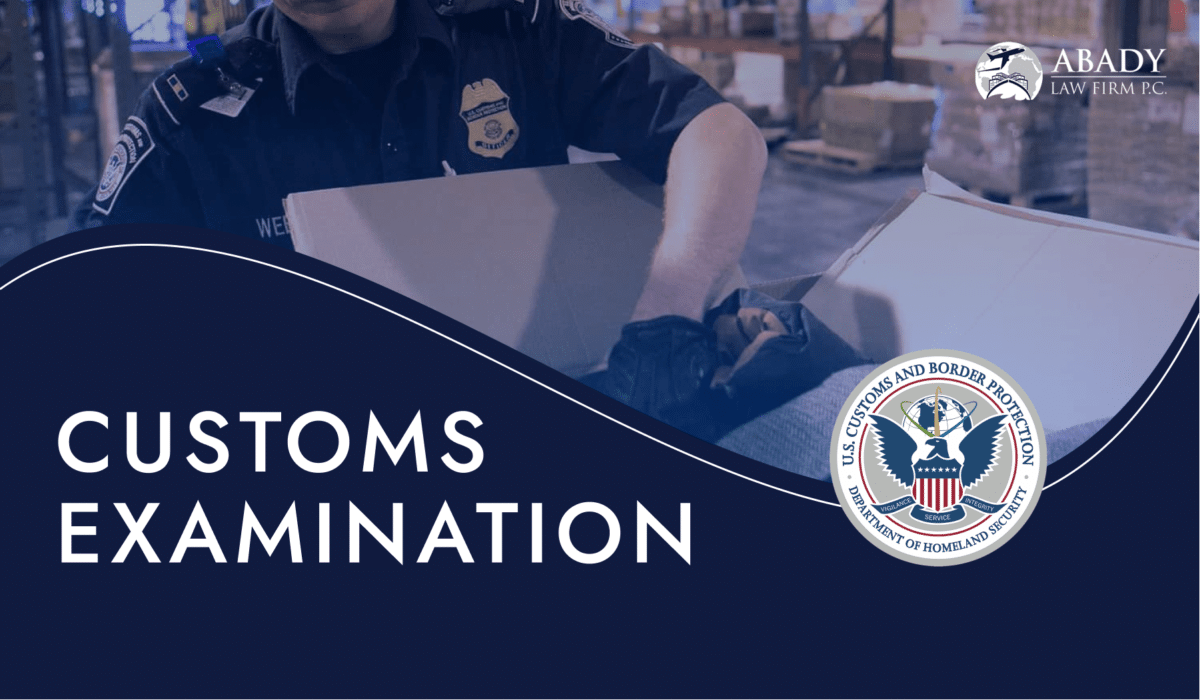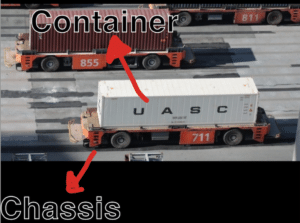If you have recently had a container inspected by Customs and Border Protection (CBP), you are probably wondering why you are being charged by the Centralized Examination Station (CES) conducting the inspection. While those charges might seem strange at first, it’s all part of the regular examination process.
What Is A Customs Exam?
Every day, thousands of shipments make their way through U.S. ports of entry, and it is the CBP’s responsibility to ensure that these shipments do not contain contraband or otherwise illegal items.
In order to protect our borders CBP has the right to inspect any shipment that enters the United States, and it is the importer’s responsibility to bear the costs of all cargo exams performed by the CES. It’s all under 19 USC 1467. That law applies to household products as well since there is no distinction between personal and commercial shipments when it comes to port inspections.
The CBP has the right to examine any shipment that comes through U.S. ports, period.
The law also states that the owner of the shipment is responsible for any costs associated with the examination in 19 CFR 151.6: The Government shall be reimbursed for the compensation, computed in accordance with § 24.17(d) of this chapter, and other expenses of the Customs officer or employee supervising the action permitted.
Types Of Customs Exams
There are 3 main exams customs will conduct to determine whether they will release or confiscate a shipment.
The X-Ray Exam (VACIS exam):
The containers on a shipment are put through an X-ray machine at the terminal. Once the photos are examined, they will release the container. Or, it will be escalated to go through an additional exam.
The Tail Gate Exam:
The container is inspected at the pier. A customs officer breaks the seal of the container and inspects its contents. If everything is correct, they will release the container or the container is escalated to the final level of exams.
The Intensive Exam:
The entire container is taken to a Customs Exam Site (CES). The contents of the container are emptied. At the CES an authorized agent will empty the container, separate the parcels, open boxes, and prepare the cargo for a customs officer to fully inspect the cargo.
How Much Does A Customs Exam Cost?
Customs does not charge for inspections, but other costs can arise when shipments are sent to a CES for further examination. The charges for the inspection are not actually coming from CBP, it’s the CES – which is a privately owned entity – that charges for the costs associated with examinations.
U.S. Customs Container Inspection Fee:
The U.S. Customs Container Inspection Fee (also known as the Merchandise Processing Fee or MPF) is a fee charged by U.S. Customs and Border Protection (CBP) for processing imported merchandise. The fee is assessed on each formal entry, which is a commercial shipment valued over $2,500 or a shipment subject to other certain regulations.
The current rate of the MPF is 0.3464% of the entered value of the commercial goods, with a minimum fee of $27.23 and a maximum fee of $528.33 per formal entry. The fee is generally paid by the importer of record or their customs broker, and is collected by CBP at the time of entry. The MPF is intended to reimburse the government for the costs of processing and inspecting commercial shipments at the border.
What Happens When Customs Inspects My Shipment?
Once an inspection is ordered by the CBP, the shipment is moved to a CES facility. There, the cargo will be unloaded, examined, reloaded, and then transported back to its original location. The bill that is sent to you is for the costs associated with all these tasks, plus storage fees in some cases.
The exact amount you end up getting charged varies depending on a host of factors like location, size of your shipments, and the distance to the nearest CES facility. The charges can be as high as a thousands of dollars in some cases, or less than a hundred in others.
While these charges might be inconvenient for some, using CES facilities for inspections allows for more timely and efficient inspections for all.
How To Mitigate These Charges?
Each day you do not return a container to the steamship line, you are incurring what is called “demurrage” charges. These charges can rack up to a couple hundred dollars a day. Further, if Customs holds your goods for a period of a few weeks these charges add up costing you thousands of dollars. In addition, the CES charges you for use of their chassis per day. Accordingly, in order to avoid these charges best to direct your freight forwarder/customs broker to request to have your goods moved to a bonded warehouse. In this case, you can mitigate your charges as the storage fees in the bonded warehouse are far less than those in demurrage and chassis use.
What Happens When You Receive an Enormous Bill from Your Freight Forwarder?
- Review the bill and make sure you are provided a full breakdown and understand each and every charge (some of the terms you may not understand), contact the freight forwarder for a full understanding. Note any charges that seem unfair or not disclosed to you prior to shipping.
- Negotiate, negotiate, negotiate – Speak with a supervisor at the freight forwarding company and explain that you cannot afford the charges. Perhaps you can negotiate your way to a lesser amount.
- If you believe that the charges are egregious you can file a complaint with the Federal Maritime Commission (FMC):
- Formal proceedings: Any person may file a formal complaint to allege violations of specific sections of the Shipping Act found at 46 USC Chapter 411.The complaint must be sworn and verified, and if seeking reparations, be filed within three years of the claimed violation. Formal complaints are generally heard by an Administrative Law Judge and are reviewed by the Commission.
- Small claims proceedings: For claims of $50,000 or less, an informal complaint may be filed. The complaint will be handled by a settlement officer for resolution using informal procedures (46 CFR Part 205 Subpart S). Links to information on FMC’s alternate dispute resolution office, and information on filing a complaint here:https://www.fmc.gov/databases-services/consumer-affairs-dispute-resolution-services/
https://www.fmc.gov/resources-services/attorneys-litigants/
Contact Abady Law Firm – Customs Examination Fees Assistance
The best way to avoid having your shipment stopped is by ensuring you work with a knowledgeable attorney to assist with all your required documents. For more information on the charges that come with a CBP inspection as well as any other customs law issue, please contact Abady Law Firm (www.customsesq.com) at 800-549-5099.



